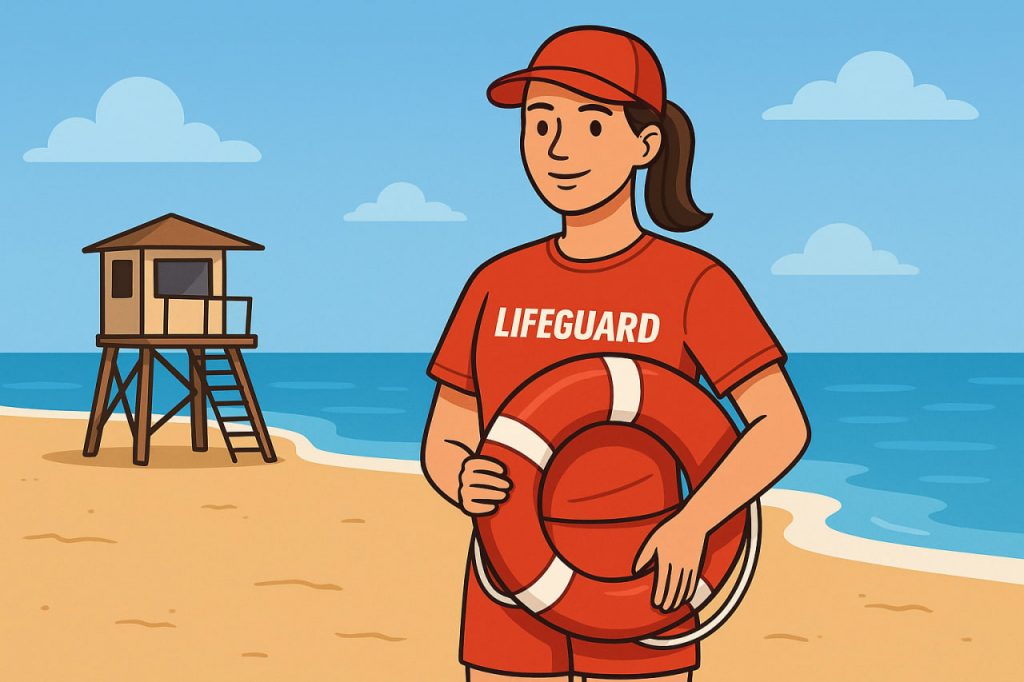Swimming in rivers, lakes, and the sea can be one of the most enjoyable summer activities — refreshing, healthy, and relaxing. However, natural waters also carry risks that pools do not: unpredictable currents, temperature changes, and hidden underwater hazards. Knowing how to behave safely around natural bodies of water helps prevent accidents and ensures that every swim remains a pleasant and secure experience.
Choosing a Safe Place to Swim
Always swim in designated areas where lifeguards are present. These places are regularly checked for water quality, depth, and safety. Avoid unknown or isolated spots — even a calm river or lake can hide strong undercurrents, sharp rocks, or tangled vegetation. If you’re unsure about the safety of the water, ask locals or authorities before entering.
Before swimming, look for warning signs or flags indicating conditions such as pollution, dangerous animals, or restricted access. Avoid swimming near bridges, docks, or boats, where propellers and sudden waves pose extra dangers.
Adapting to Water Temperature
Sudden immersion in cold water can shock the body, leading to muscle cramps or even loss of consciousness. To prevent this, enter the water gradually, allowing your body to adjust. Avoid jumping into unfamiliar waters — the temperature may be much lower than expected, and hidden obstacles could cause injuries.
If you feel dizzy, weak, or short of breath while swimming, return to shore immediately and rest. People with heart problems or high blood pressure should consult a doctor before swimming in cold natural waters.
Swimming Technique and Awareness
Even strong swimmers should stay within their comfort zone. Never swim too far from the shore — fatigue, cramps, or currents can make it difficult to return. If caught in a current, do not fight it directly. Instead, swim diagonally or parallel to the shore until you’re out of the flow, then head back safely.
When swimming with friends or family, use the buddy system — always keep an eye on each other. Avoid alcohol before or during swimming, as it impairs judgment and coordination. For children, adult supervision is mandatory at all times, even in shallow water.
Hygiene and Environmental Safety
Natural waters can contain bacteria, parasites, or pollutants. Avoid swallowing water, and shower afterward if possible. Don’t swim in areas with visible algae blooms or unpleasant odors — these often signal contamination. Respect nature: do not litter, disturb wildlife, or damage plants near the shore.
Emergency Preparedness
Knowing basic water rescue and first aid can save lives. If someone is in trouble, call for help immediately and throw a floating object rather than diving in without proper training — rescuers themselves often become victims. Keep a first-aid kit and emergency numbers accessible whenever you go swimming outdoors.
What to Bring for Safe Swimming
- Light, UV-protective clothing and sunscreen.
- A hat and water shoes to protect from sunburn and sharp objects.
- Drinking water to stay hydrated.
- A whistle or flotation device if swimming far from shore.
Interesting Facts
- Around 80% of drowning incidents occur in unsupervised or prohibited swimming areas.
- Cold water below 15°C can cause hypothermia within minutes.
- Strong currents are often invisible — even calm rivers can move at several kilometers per hour.
- Floating calmly instead of panicking greatly increases survival chances in emergencies.
Glossary
- Current — the flow of water moving in one direction, which can pull swimmers away from shore.
- Hypothermia — a dangerous drop in body temperature caused by cold water exposure.
- Buddy system — safety practice where two people watch and assist each other.
- UV protection — materials or sunscreen that block harmful ultraviolet rays.
- First aid — basic medical help provided before professional assistance arrives.


